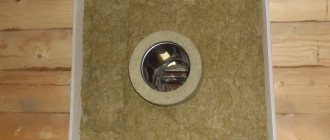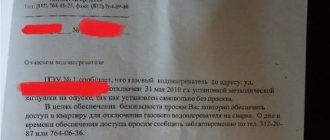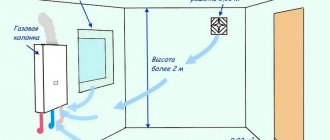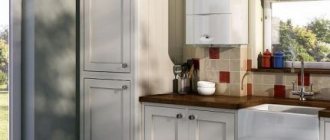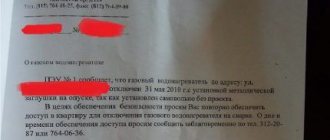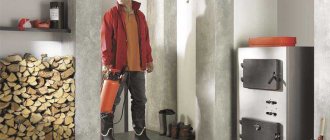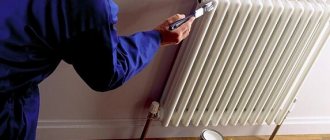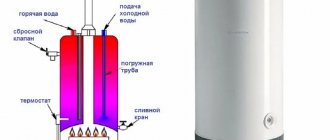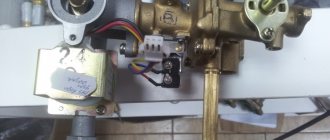When installing a gas water heater, you need to consider the connection to the chimney. The removal of combustion products is an important factor in the operation of equipment. A pipe is used as a connecting element between the column pipe and the chimney. Don't know what material to choose for the hood? Perhaps a corrugated gas water heater will suit you.
Why does a gas water heater need a hood?
A geyser is a convenient device that allows you to provide residents of your home with hot water at any time of the year. Modern devices are equipped with temperature regulators, sensors for the operation of the water point and other convenient functions. But even the most modern unit will not protect against carbon monoxide if the chimneys in the house are not cleaned.
In addition, household gas is explosive, and if leaked, in a certain proportion with oxygen, it can provoke a disaster.
A hood will help solve the issue of removing combustion products and providing sufficiently high draft. It should be installed strictly in accordance with the requirements of regulatory documents.
The chimney of the column should not be confused with devices for other kitchen appliances that run on gas.
Common mistakes
Errors when installing ventilation elements can lead to disruption of the proper operation of the structure and loss of operational safety. The most common are the following:
- Combination of hoods for a water heater and a gas stove, or for a gas boiler. In this case, reverse draft may occur in the ventilation shaft and carbon monoxide will return to the room;
- Do not connect two speakers to one chimney;
- The next mistake concerns the installation of a geyser - it is often placed in the bathroom, this cannot be done. All gas appliances must be installed in rooms with a window;
- Self-taught craftsmen often confuse the ventilation duct with the riser supplying water to the column. The consequences of such an error will be the replacement of all gas equipment, not only for you, but also for your neighbors below. Gas services remove liquid. They will turn off the gas and issue a hefty fine;
Requirements for chimneys for geysers (SNIP)
Requirements for chimneys are set out in the following documents:
- SNiP 41-01-2003 in a new edition (SP 60.13330.2012);
- NPB 252-98 (fire safety standards);
- SP 42-101-2003;
- VDPO (rules for the production of pipe and furnace works).
The main provisions regarding the direct removal of smoke from household water heaters are collected in the following paragraphs:
- The cross-sectional area of the chimney pipe must be greater than or equal to the cross-section of the outlet pipe of the column;
- Laying gas pipes through living rooms is prohibited;
- The chimney system must be completely sealed, resistant to corrosion and temperatures up to 200°C;
- The vertical section of the chimney at the outlet of the column should not be shorter than 500mm. Only in some cases this figure is reduced to 250mm;
- The length of connecting pipes should not be more than 3 m in designed houses and no more than 6 m in existing ones;
- The design allows for no more than 3 turns with a radius of at least the pipe diameter;
- If the wall of the building is made of non-combustible materials, the distance from it to the exhaust pipe must be at least 5 cm, if the wall material is flammable - at least 25 cm. If the fire protection requirements of SP 42-101-2003 are met, the distance can be reduced to 10 cm;
- If the connecting pipe passes through an unheated room, it must be protected with thermal insulation;
- The slope of the exhaust pipe towards the column must be more than 0.01;
- You cannot use one hood for a gas water heater and a gas stove;
- The ceiling height in the room with a water heater and chimney should not be less than 2 m. Area – at least 7.5 m for one device, at least 13.5 for 2 devices.
Calculation of hood parameters
Before starting work on installing a chimney for a geyser in an apartment or private house, it is necessary to calculate the parameters of the exhaust channel. These parameters determine the required amount of air removed from the room.
When calculating, the following indicators should be taken into account:
- power of heating devices;
- volume of exhaust gases;
- difference in temperatures of outside air and combustion products;
- the height of the chimney pipe (for gas installations at least 2 m).
There are many types of pipelines for geysers, of different diameters, shapes, and lengths. Standard chimney diameters are 110-130 mm. For dispenser power up to 19 kW, a pipe with a diameter of 11 cm is used, above – 13 cm.
What kind of corrugation is used for chimneys
Combustion products in an apartment building are discharged into the ventilation duct, in a private apartment - to the street. Depending on where the gases are discharged, the pipes are divided as follows:
- Coaxial - the pipe exits through the wall or roof of the house to the street;
It is a structure of two pipes, the larger of which is put on the smaller one. Oxygen from the street is supplied to the fire through the free space between the pipes.
- Chimney - with connection to the ventilation duct.
Chimney pipes, in turn, can be smooth steel or corrugated.
- Smooth steel pipelines. Covered with white heat-resistant enamel or galvanized. Maximum length -1.5m. Made from sheet steel with a minimum thickness of 0.6mm. Due to temperature differences, condensation forms in the pipes and freezes in winter. Therefore, the structure must be carefully insulated.
- Flexible corrugated air ducts. Corrugated pipes are the best choice for removing waste gases from the column. They are convenient, reliable, and inexpensive. Due to their low weight and flexibility, they are easy to install.
The standard diameter of corrugated pipes is 11 and 13 cm. Maximum length – up to 3m. If you need to mount a longer section, the parts are connected with metallized tape. It can also be used when repairing corrugation.
When choosing a pipe for exhaust, it is necessary to take into account the temperature of the exhaust gases. Usually in the column it reaches 200-300°C, so the operating temperature of the corrugation should be at least 350°C.
Corrugated chimneys are made from stainless steel or aluminum.
In the case of gases venting through the wall, a special hole is prepared in it with an installed passage pipe, isolating the wall and the pipe from each other.
Let's look at the features of each material.
Stainless steel chimney:
- Withstands heating up to 900°C.
- Stainless steel is a durable and corrosion-resistant material;
- The corrugation bends in any direction and does not require additional fittings.
Aluminum:
- The multilayer structure made of aluminum foil and reinforcing wire is not inferior in flexibility to stainless corrugation;
- The temperature of the exhaust gases should not exceed 400° C;
- Aluminum is lighter than stainless steel and has better stretchability;
- These products are inferior to their stainless steel counterparts in strength.
The use of aluminum pipes is not prohibited, but, as practice shows, inspectors in most cases require replacing aluminum with another material.
In any case, you should purchase only certified products.
Average prices per set
The average cost of the kit primarily depends on the length of the chimney and the diameter of the selected pipe.
When purchasing, please note that aluminum corrugation stretches from the original length of 0.65cm to 3m. Stainless steel products have little stretch. Average cost of products:
- Aluminum - 200 rub/m;
- Stainless steel sleeve – 650 rub/m.
In addition, you should purchase special metal tape, sealants and the necessary fittings.
The average cost of a complete set made of aluminum is 500 rubles, from stainless steel - 1000 rubles.
The purpose of the column hood and its types
The main purpose of the hood is to remove gas combustion products in the column burners. Carbon dioxide and water vapor themselves do not pose a danger to humans, but their excess reduces the amount of free oxygen. But that's the best case scenario. The exhaust gases contain a considerable amount of products of incomplete combustion, including the most dangerous component - carbon monoxide. Carbon monoxide poisoning is most common when operating boilers and furnaces using solid, liquid or gaseous fuels.
The second purpose of the hood is forced air circulation in the room where gas-powered appliances are to be installed.
Based on their types, hoods are divided into two categories:
- Built into standard chimney ducts;
- Individual exhaust devices.
Hoods in a private home usually belong to the second type.
Hoods can also be divided into:
- rigid, the installation work of which involves the use of straight short sections connected by special corners with sealing of the joints using special metal tape;
- flexible, made of corrugated pipe, allowing it to be bent in the desired direction.
Rigid and flexible hoods for geysers
All versions are made of metal, which must have high corrosion resistance to combustion products. This:
- Stainless steel;
- Enameled steel;
- Aluminum.
Enameled pipes have the greatest resistance to corrosion and low resistance to the movement of gases, but they have increased weight and allow installation only of straight sections.
Corrugated hoods are preferred in most applications. Even the fact that the corrugated surface has increased resistance to the movement of gases, the absence of sharp kinks and smooth transitions fully compensates for this fact.
Advantages and disadvantages
The main advantage is elasticity. It is easy to build (connect) a smoke exhaust system of any complexity and configuration from them. They easily turn in a given direction and bend at the desired angle. When working with them, bends, flanges and other rotating elements are not required. All this has a positive impact on the final cost of the work performed.
Round walls facilitating the rapid removal of decomposition products Source cloud.maxni.ru
In fact, the advantage of using them can be characterized by the following list:
- The favorable rounded shape of the pipe cross-section is considered optimal for the unhindered passage of gases. The flow rises in a spiral, as a result of which a stagnant zone is formed in the corners of rectangular pipelines, in which destructive condensate settles. Moisture traps fine particles of unburned fuel, which settle on the walls and form soot.
- Simple installation and connection to other sections of the duct and heating equipment.
- Low cost. This is the cheapest option for installing a smoke exhaust system.
- If damaged, it can be easily removed and a new one installed in its place.
- There is no need to purchase additional components: corners, bends and other accessories.
- The aforementioned ease of laying at different angles and directions.
Requirements for chimneys
The standards establish the following requirements for the installation of air ducts for geysers:
- the diameter of the exhaust pipes must exceed the size of the outlet pipe;
- to select the material, the maximum operating temperature is +2000C;
- laying smoke exhaust ducts inside residential premises is prohibited;
- the maximum permissible number of pipe turns is up to three;
- the minimum length of the section without joints is more than 3 m (in new buildings at least 6 m);
- the length of the outlet at the outlet of the device must be at least 0.5 m;
- the distance to walls made of fireproof material is more than 50 mm, non-flammable material is 250 mm or 100 mm if insulation has been installed;
- the slope of the pipe is from 0.01 away from the heating device (at least 300 per linear meter);
- Only one chimney can be connected to the device;
- The minimum distance between equipment is selected to be at least 0.75 m.
Types of exhaust pipes
Exhaust pipes can be of the following types:
- rigid, connected by fittings;
- flexible or corrugated;
- coaxial, which are a complex structure in which the outflow of combustion products is realized through one channel, and the influx of fresh air into the other.
Using corrugation is beneficial due to ease of installation, minimal number of connecting joints, and high level of tightness. Coaxial ones are the most expensive, but they do not require thermal insulation and are safe to use.
Corrugations for geysers are:
- stainless steel – resistant to corrosion, flexible, heat-resistant (up to +9000C), not exposed to acidic environments, and does not require the use of adapters for installation;
- aluminum - operated at temperatures up to +5000C, resistant to aggressive environments, corrosion, high humidity, the surface is easily scratched, deformed, high cost;
- enameled steel - heat-resistant, durable, have excellent aesthetic properties, the protective layer is not resistant to mechanical damage, it is necessary to monitor the integrity of the enamel;
- galvanized steel - do not require maintenance, are resistant to humidity, corrosion, and susceptible to mechanical damage.
Corrugated pipe for geyser
Ways to check traction
How to check the draft in a gas water heater? There are two ways to identify a blockage and remove it in time.
It is worth checking them before starting heating to avoid poisoning. Often in summer, plugs form in pipes. The cause is insects and birds that like to build nests in cool pipes.
Anemometer
The exhaust pipe for a gas water heater can be checked with an anemometer. He checks the speed of gas movement. It is enough to place the sensor with a fan at the chimney outlet and see the result on the screen. Compare with normal values and determine the difference.
The disadvantage of an anemometer is its high price. Cheap Chinese models will not give a complete picture, as they work with large errors. But they are suitable for everyday use.
Folk method
Take a lighter and bring it to the lowest point of the pipe while the boiler is running. In the absence of interference, the flame should be “swallowed” inside. If this does not happen, carry out cleaning work.
Types of chimney
The choice of a suitable pipe depends on the operating principle of the column. They are divided into two types:
- With an open combustion chamber (atmospheric). Combustion is supported by natural air pressure taken from the room. Therefore, ventilation is important here.
- With a closed camera. These are turbocharged models in which the air is forced by a fan.
Modern models are closed type. They are convenient to install both in apartments and private houses. Such a device can be called chimneyless, since it requires the connection of one type of channel - coaxial. The design includes two pipes that are inserted into one another.
The coaxial channel must be the same diameter as the output pipe of the column, no less. The same selection criteria exist for closed-type equipment, only in this case the choice of materials and designs is greater:
- Steel chimney . Consists of stainless pipes no more than 1.5 meters long. Used to organize drainage inside the house. Assumes no more than three bends during assembly;
- Double-loop sandwich . The design consists of two stainless pipes, which are located one inside the other. A layer of insulation is laid between them. Great for organizing in an unheated room when you need to avoid freezing. Also prevents the appearance of condensation;
- Brick, asbestos-cement, ceramic shafts , which are embedded in the inside of the wall;
- Corrugated leads made of aluminum foil or stainless steel - exhaust pipes for connection to the shaft.
Today on the market you can find steel structures that are coated with heat-resistant white enamel. This is an excellent solution for the internal arrangement of a chimney. It looks more aesthetically pleasing compared to galvanized.
Chimney system design
Design components that you will need during installation:
- Umbrella - upper protection against foreign elements entering the hole;
- Chimney pipe;
- The pipe is an insulating element;
- Mounting brackets;
- Connecting elements - clamps;
- Tee - allows you to move from the column body to the hood;
- Monitoring window (hatch) - allows you to monitor the condition of the mine;
- Collection for condensate.
What is better to choose
Many apartment residents choose the cheapest option - corrugated aluminum pipe. They are easy to install and bend in any direction. At the same time, they are quite dangerous. Aluminum can burn out at any time, and carbon monoxide poisoning can be fatal.
Connecting a stainless steel outlet is safer. Purchase and assembly will cost more than corrugation, but you will sleep peacefully, because this design is reliable and durable.
When building a private house, a chimney is immediately laid. The shaft is lined with bricks, and an asbestos pipe is installed inside to prevent condensation from accumulating. Moreover, separate smoke removal systems are provided for the column and boiler.
Another option for your home is an external steel chimney. It is insulated inside, easy to install and effective. If you bought a house without a hood and a solid shaft, then this will suit you.
The outer structure is equipped with a pocket with a steel tap for collecting condensate.
Things to consider:
- The height of the outlet channel must be at least 4.5 meters. It is important that the entire hole is of the same diameter, without narrowing, otherwise there will be poor traction;
- The standard diameter is 11–13 centimeters. Selected individually depending on the device model;
- Climatic conditions. The selection of designs and materials that will be resistant to cold and heat depends on this criterion;
- The chimney must rise above the roof of the house by at least 1 meter.
Installation Aspects
Geysers and boilers always produce toxins that can enter the room. To avoid this, listen to the advice of installers on selection and installation.
Types of gas outlet pipes
Gas outlets are often made of metals. A noticeable disadvantage of this is the guaranteed formation of condensation. The reason is the temperature difference between the gases inside and the cold air outside. To avoid this, you can buy and install fire-resistant thermal insulation. Some requirements already come with insulation inside.
The problem is also solved using a coaxial gas outlet. Two separate compartments for carbon monoxide removal and oxygen intake will prevent water droplets from forming.
Corrugated pipes can be used. Since waste moves quickly inside, it does not have time to cool before exiting.
Dimensions of chimney pipes
Dimensions (diameter, wall thickness, length) are calculated based on the power of the equipment and the environment. In most regions of the CIS, the use of pipes 11 centimeters in diameter is acceptable.
The instructions for the heating device indicate the recommended dimensions.
Installation standards
The gas outlet in contact with the wall must be insulated with fire-resistant material. It is advisable to use mineral wool.
Sometimes two devices can be connected to one pipe:
- If two boilers are installed on one floor;
- Two speakers installed.
When installing, observe the following rules:
- Mounting elements must not burn;
- Butt sealing is carried out using non-flammable mixtures;
- You cannot use more than three knees;
- The pipes must not be damaged.
To prevent condensation indoors, it is better to insulate the walls in the room.
Features of boilers and columns
Systems with a closed combustion chamber must be equipped with a coaxial flue exhaust. It will be able to create active oxygen saturation and removal of combustion products. Boilers and dispensers with forced air supply require the installation of a blower fan. The ventilation system turns on simultaneously with the heating. Proper installation will reduce the likelihood of toxins entering the apartment.
Compatibility of the chimney with the hood
The simultaneous use of a gas outlet and an exhaust hood is not allowed. A running exhaust system can knock out the fire, which can lead to gas poisoning.
Even if attenuation does not occur, there is a possibility of carbon monoxide entering the room. When using gas equipment, this is unacceptable.
Chimney draft
An indicator expressing the efficiency of combustion products exiting through a pipe. Determined by the rate of removal of toxins from the chimney system.
The higher the indicator, the better the removal of carbon monoxide and the penetration of oxygen to the burner.
Dangerous consequences of malfunctions
The exhaust pipe for the geyser may become clogged. Because of this, carbon monoxide can penetrate into the room, creating a danger to human life. Carbon monoxide is odorless and tasteless, so its penetration may not be noticed. This is especially dangerous at night. The sooner a leak is detected, the better. In case of mild poisoning, unpleasant symptoms appear: migraine, nausea, dizziness, vomiting. If it's strong, it means death.
Blockage is also dangerous because oxygen stops getting into the system. This causes the wick to fade. Combustible substances enter the atmosphere, poisoning the air. However, it can be detected by smell.
Selection principles
A corrugated pipe for a geyser is selected taking into account the following criteria:
- volume of exhaust gases;
- terms of Use;
- chimney height;
- temperature of combustion products;
- diameter of the gas equipment outlet pipe;
- the presence of aggressive or toxic elements;
- weight of the structure and load-bearing capacity of the walls.
Calculation of hood parameters
The exhaust power for geysers (m3/hour) is determined based on the formula:
, where S is the area of the room in which the equipment is located;
H - room height;
k is the number of air replacement cycles per hour, taken equal to 12, according to current standards.
The resulting value must be increased by 15–20%, since the equipment cannot constantly operate at maximum power. Gentle operating modes will extend the life of the column and increase the safety of its operation.
The volumetric flow rate of gas combustion products L is calculated as follows:
, where Qt is the selected power of the dispenser, kW.
Based on the volume flow, the diameter of the outlet pipe is determined. If there is no suitable model, then the closest one with higher performance is selected.
Average prices per set
A steel gas pipe with a diameter of 115 mm or more will cost approximately 17 thousand rubles, depending on the length, type of insulation, and the number of additional elements. A similar stainless steel set will cost from 19 thousand rubles. The cost of enameled steel structures starts from 65 thousand rubles, and aluminum ones - from 90 thousand rubles.
The price varies depending on the diameter of the chimney, configuration, and manufacturer.
Gas boiler hoods: design, features
Gas heating boilers with a power of up to 30 kW are usually placed in a kitchen with an area of 15 square meters. Requirements for the window are an area of 0.3 square meters, a ceiling height of more than 2.2 m. In this case, the presence of a window in the room is mandatory.
Higher power equipment requires a special boiler room. In any case, a high-quality hood for a gas boiler is the most important condition for its efficient and safe operation.
The main elements of a reliable hood for a gas boiler:
- passage box;
- pipeline outlet;
- adapter for securing the inlet and outlet pipes;
- crimp clamps with brackets for fastening to walls and ceilings;
- telescopic pipes;
- a tee equipped with a condensate drain;
- special bends;
- cone tip.
Materials for exhaust structures
The temperature of gas combustion products is within 400...450 degrees. Therefore, hoods for gas boilers and modern water heaters are made of heat-resistant materials. Due to insufficient tightness and reliability brickwork , previously widely used for chimneys, is now used as a decorative element for metal pipes.
Ceramic exhaust pipes, wrapped with insulation in an expanded clay box, are used relatively rarely due to their high cost. The key advantage of ceramic routes is durability.
Metal pipes with a thickness of about 0.6 mm are mainly used . Lightweight aluminum is easy to install and reduces the risk of condensation. Aluminum foil is also used to make corrugated pipes, which are popular for hoods, easy to install, and condensate-resistant. Strong, reliable steel pipes are made of stainless steel or protected with an enamel heat-resistant coating.
A highly effective solution is to use coaxial pipes. Flue gases are vented outside through the internal pipeline, and air is sucked in between the pipes. By heating the air, the efficiency and efficiency of equipment is improved and gas consumption is reduced.
It is mandatory to use a coaxial pipe to exhaust a gas boiler and a closed-type column.
Thermal insulation requirements
Thermal insulation must be used to eliminate condensation. Often, hoods for geysers are made from double-circuit chimneys with an internal stainless pipe, an external galvanized pipe and thermal insulation between them.
Heat-resistant materials are used as thermal insulation - usually mineral fibers. Galvanized pipes are used only for the external coating of heat-insulated channels, since overheating of zinc above 419.5 degrees leads to its melting.
Advantages of a corrugated pipe hood
For the manufacture of an exhaust pipe the following can be used:
- standard (straight) pipes made of galvanized or enameled steel. Steel pipe can withstand high temperatures and is durable and reliable. However, when assembling a smoke exhaust duct, it will be necessary to use additional fittings to change the direction of the system, which will lead to a decrease in the efficiency of the smoke exhaust and an increase in its cost;
Smoke exhaust duct made of galvanized steel
- corrugated (flexible) pipes. Flexible is easy to install and low cost.
Chimney corrugation
For the manufacture of corrugated smoke exhaust pipes the following are used:
- aluminum. The aluminum pipe is designed for temperatures up to 500°C and can be used for a boiler (column) with low power;
- stainless steel. The most durable material that can withstand higher temperatures.
The flexible stainless steel chimney is distinguished by:
- the ability to withstand temperatures up to 900°C, which allows it to be used to remove combustion products from equipment of any power;
- inertness to acidic environments and almost all chemically active substances formed as a result of combustion;
- integrity. The pipe can be bent in any direction without damage, which allows you to assemble a chimney without additional fittings;
- low cost;
- ease of installation.
Features of the chimney device
The ventilation system for removing waste combustion products and ensuring air flow in the room has the same device, whether it is a corrugated hood for a gas water heater or a solid brick chimney. The chimney must consist of the following parts:
- Feedthrough pipe.
- Pipe for removing combustion products.
- Adapter for connecting previous parts to each other.
- Crimp clamps and mounting brackets.
- Telescopic tubes.
- Tee with a hole in the region to remove condensate.
- Bends.
- Cone tip.
All parts can be attached one by one independently, without violating safety precautions, using special non-flammable materials. But it is better to turn to professionals.
How do chimneys differ from each other? The material from which the parts are made, the choice of pipe installation method and the geometry of the ventilation shafts.
DIY chimney installation
Installation of a corrugated stainless steel pipe is carried out in the following order:
- at the initial stage, markings are made at the location of the air duct and the locations of the fastening elements are determined;
- holes are drilled and clamps are attached;
- the chimney is secured to the outlet pipe using a clamp;
Installing an air vent on the outlet pipe
- a straight section of appropriate length is installed;
- the corrugated pipe is laid and fixed to the chimney (ventilation system);
- an adapter is installed;
- The corrugated pipe is inserted into the system and secured with a clamp.
Connection to ventilation
Before putting the combustion products exhaust system into operation, it is necessary to check the draft level and tightness.
The recommendations stipulate whether it is possible to use brick, steel and corrugated chimneys for geysers, what diameter the pipes should be, fire breaks and much more.
How to choose material for the hood?
For these purposes, brick, galvanized and stainless steel and ceramics can be used. Let's take a closer look at each of them, and also study what other options the market and engineering offer.
Brickwork hood
Although brick is used by builders when arranging ventilation, its properties do not allow them to save on other materials. Firstly, brickwork is not durable. The most comfortable conditions for her are constant contact with hot gases. Otherwise, condensation will form, which leads to its rapid destruction. Secondly, a brick chimney is labor-intensive to install, has a complex design and is unreasonably high in cost. Therefore, if you are faced with the task of arranging a chimney for a gas boiler, it is better to pay attention to other options. In this situation, a shaft is made of bricks. This same option can be chosen if for some reason heating the house with gas is currently impossible, but in the future it is planned to use it.
If brickwork is chosen as the material for the shaft, then the chimney itself is assembled from single-circuit galvanized pipes. The thickness of their walls is selected taking into account the temperature of the outlet gases.
Components of a chimney inside a brick shaft
Steel hood
In this situation, steel pipes are very convenient. They are easy to install when compared, for example, with brickwork. The wall thickness is selected depending on the heating. Gas boilers produce quite hot exhaust gas, about 400-450˚C, so the thickness of the walls should be 0.5-0.6 mm. However, there are pitfalls here too. Of course, steel is resistant to the negative effects of condensation. But on average, its wear resistance is much lower than, for example, the wear resistance of ceramic products. In addition, thin-walled pipes burn out quickly if used with solid fuel devices, so this option is not optimal when using different types of heating elements for different periods of time. Steel choose:
- during reconstruction;
- if there is no space for a ceramic hood.
Since steel ventilation ducts often spoil the exterior of a private house, they are covered with brickwork or other finishing materials.
Steel pipes are marketed in two variations - single-circuit and double-circuit. The second option is called a “sandwich” in slang. It consists of two pipes nested one inside the other, the gap between which is filled with fire-resistant basalt wool. The thickness of the inner pipe is determined by the temperature of the outlet gases (recall that this value is 0.5-0.6 mm for the devices discussed in the article).
Installation of a steel double-circuit chimney
“Sandwiches” are considered more economical among all steel hood options. This conclusion suggests itself if we take into account good thermal insulation, which increases the efficiency of the heating device.
Double-circuit steel chimneys are made of stainless and galvanized steel. Both metals are combined in “sandwiches”, since using only stainless steel is not economically feasible. The difference between galvanized and stainless steel is the latter’s higher resistance to condensation, which negatively affects its price. Otherwise, the properties of these two materials are not inferior to each other.
It is critically important that the internal part of the double-circuit structure is made of stainless steel; the material of the external part does not play a special role. This is due to the properties of zinc. Its heating above 419.5°C is dangerous. In this situation, the metal oxidizes, and further chemical reaction leads to the release of toxic fumes. Everything becomes even worse with high humidity, which cannot be avoided when commissioning a gas boiler. Therefore, when purchasing a sandwich structure, pay attention to this.
In principle, you can make a double-circuit chimney yourself without any special skills. To do this, wrap the stainless steel pipe in fire-resistant heat-insulating material. When choosing the latter, you can pay attention to basalt fiber, expanded clay or polyurethane. Then place everything together in a galvanized pipe of larger diameter.
Installation diagram of a steel hood
Features of installing a steel ventilation column:
- The segments are assembled using the “pipe to pipe” method in order, starting from the bottom;
- For the convenience of subsequent cleaning of the post, provide a sufficient number of inspection wells;
- For stability, wall brackets are attached in approximately 150 cm increments;
- When designing, pay attention to the horizontal segments - they cannot be more than 1 meter long unless forced draft is provided.
Stainless steel ventilation duct
Ceramic hood
This type of hood is the most versatile, so it is an ideal option if you plan to switch from or to gas fuel. They are easy to clean, resistant to dirt, due to their high gas density, and to aggressive chemical compounds, so you don’t have to worry about toxic substances getting into your living rooms. And, of course, ceramics are durable.
But there are also disadvantages. Ceramic pipes have high moisture absorption. If you choose them, you will have to provide good external ventilation and equip the structure with condensate drains, otherwise the invested effort and money will not be worth it.
Ceramic alone is not used in chimneys. To make the most of its positive properties, it is combined with mineral wool and stone. Simply put, the ceramic pipe is wrapped in insulating material and then placed in an expanded clay concrete shell.
Structure of a ceramic chimney
Ceramic hood design
Coaxial ventilation structure
When designing ventilation for gas boilers, pay attention to the compact “pipe-in-pipe” design, or, in other words, a coaxial chimney.
Operating principle of a coaxial ventilation system
Components of a coaxial chimney
Coaxial systems, due to their characteristics, are suitable for heat generators with a closed combustion chamber (which is a gas boiler). Oxygen necessary for combustion enters through the outer pipe, and exhaust gases are removed through the inner pipe. This design has its advantages:
- safety (exhaust gases are cooled by cold air circulating in the outer pipe);
- the incoming air heats up and increases the efficiency of the boiler;
- high efficiency means that the coaxial design is more environmentally friendly than others;
- can be used with the appliance in the kitchen (it is located outside the room and does not affect the comfort in it).
Features of installing a coaxial chimney
- You cannot use a horizontal coaxial chimney if you do not plan to install forced draft;
- try to get by with no more than two knees;
- if there are several boilers, create a separate chimney for each; combining them is undesirable.
CORRUGATED SMOKE DUTS FOR GAS BOILERS
It is possible to use flexible metal chimney corrugation for a gas boiler, as well as any other heating equipment, due to the high technical characteristics of the material. There are several important aspects to consider:
- Aluminum pipes can burn out after several years of use. Therefore, if there is a need to connect a corrugated chimney, it is better to choose a sleeve made of stainless steel.
- The material has poor heat-saving characteristics. To reduce the production of condensate, you will need to add heat and sound insulation to the corrugated pipe. To do this, you can use non-flammable mineral insulation 5 cm thick. Thermal insulation is wound around the pipe and covered with any foil reflector on top. Fixed with a knitting wire.
- To connect pipe sections of different diameters, special adapters are used.
The rules allow the use of aluminum corrugated pipes in the chimneys of condensing gas boilers, due to the low temperature of the flue gases. But to ensure greater safety, it is better to choose a stainless steel pipe.
Requirements for smoke exhaust structure
The basic rules of SNiP 42-01-2002 and 2.04.08-87 approve the following requirements for installing gas boilers and connecting them to the hood:
- The ceiling in the boiler room must be at least 2.5 meters high.
- The area of the room for one piece of equipment must be at least 4 square meters.
- It is necessary to have a window with a window of at least 0.3 square meters in area. Otherwise, additional ventilation is required.
- The walls in the boiler room must be made of non-combustible materials.
- There must be an inspection window in the chimney system; such a device is installed at a distance of 0.25 meters from the chimney opening.
- You cannot connect several gas-powered appliances to the same ventilation system.
- The gas stove must be placed in another room, separate from the boiler at a distance of at least 6 meters. If these conditions are met, it becomes possible to cancel the previous comment.
Step-by-step instructions for constructing a smoke exhaust system
When commissioning the equipment, room ventilation must be taken into account. In the absence of air exchange, forced turbo exhaust must be installed. Without it, putting a gas boiler into operation is impossible. We will look at how to install a hood for a gas boiler in a private house using the example of a coaxial chimney. The length of the pipe from the boiler room to the street for this type of hood cannot be more than two meters.
- When starting work, make sure that the installation of the gas boiler complies with the rules and regulations approved by inspection organizations in order to avoid reworking the entire power unit.
- Select the appropriate material for the hood, taking into account the parameters of the gas outlet: gas boiler inlet = pipe diameter.
- Calculating the power of the fans and their number, taking into account how long the hood is, the number of bends in its structure, and the position in space relative to the horizon, at what height the exhaust pipe is located in the room.
- Do not forget about the features of budget equipment indicated in the technical passport.
- All materials used in the work must be fireproof and not susceptible to corrosion.
- After making sure that all parts are intact, we proceed to assembly. We connect the chimney elbow to the gas boiler pipe using a tee.
- To extend the coaxial pipe and connect all its parts, special crimp clamps and fire-resistant sealants are used.
- Turbo exhaust is used if there are more than two elbows in the pipeline geometry. This helps maintain the efficiency of the gas boiler . The fan and all sensors are installed after installing the supply pipe.
- Installing a coaxial pipe outside a building is no different from installing a conventional sandwich chimney.
Outside the building
Having laid the line for the exhaust device in the house, the design of the hood for the gas boiler goes outside.
- As soon as the pipe has been brought outside through a hole in the wall, it must be closed with special metal plates. The remaining space between the pipe and the wall is filled with mineral wool.
- Now we install the tee. The lower hole is closed with a plug with an inspection for cleaning the pipe.
- We increase the chimney to the required length by connecting the parts using a special sealant and clamps with gaskets. As the pipe grows, we attach it to special brackets.
- We install a protective cone at the top of the chimney and additionally attach it to guy wires in those places.
- If the chimney structure was not coated with special paint at the factory, this can be done at home. This is done to protect the metal from environmental influences.
When ordering an outdoor chimney system, it is important to consider where the forced exhaust starts from the gas boiler or from the room where the turbo elements are installed.
Inside the house
Inside the house, the installation of a coaxial chimney was described in detail, with comments, above. The only step you have left to do is to connect two pipes, street and indoor, using the extension method. For additional insulation, it is recommended to use special metal tape.
I would like to note an important advantage of a coaxial chimney - the absence of additional holes in the roof or wall of your home.
How to install
The installation of gas equipment should be carried out by a specialist. If you decide to install the pipe yourself, be sure to read all the safety requirements.
Procedure:
- We accurately measure the distance required to install the chimney and apply markings to the wall;
- Purchases clamps for fastening, pipes, an adapter from the column, units for laying pipes through ceilings, a nozzle for covering the street chimney;
- We determine where the pipe will go - into the ventilation duct shaft, or to the street, and prepare the appropriate technological holes;
- We begin the installation of the lower part of the chimney - connect it to the column;
- We connect a pipe with a valve to increase traction;
- We fasten the remaining parts of the chimney with clamps installed every 1.6 m;
- All locations of passages through the floors and roof must be isolated with plugs to prevent fires;
- If the room does not have an exhaust duct inside the wall, it is recommended to use an attachment or root pipe for a gas water heater;
- If steel pipes are attached, it is necessary to provide L-shaped adapters for the ventilation duct and exhaust hood;
- All joints are connected using heat-resistant sealants;
Advice from a professional: To install a hood in a private house, it is better to use coaxial pipes or double sandwich pipes with insulation. In an apartment building, you should not install a chimney yourself at all.
